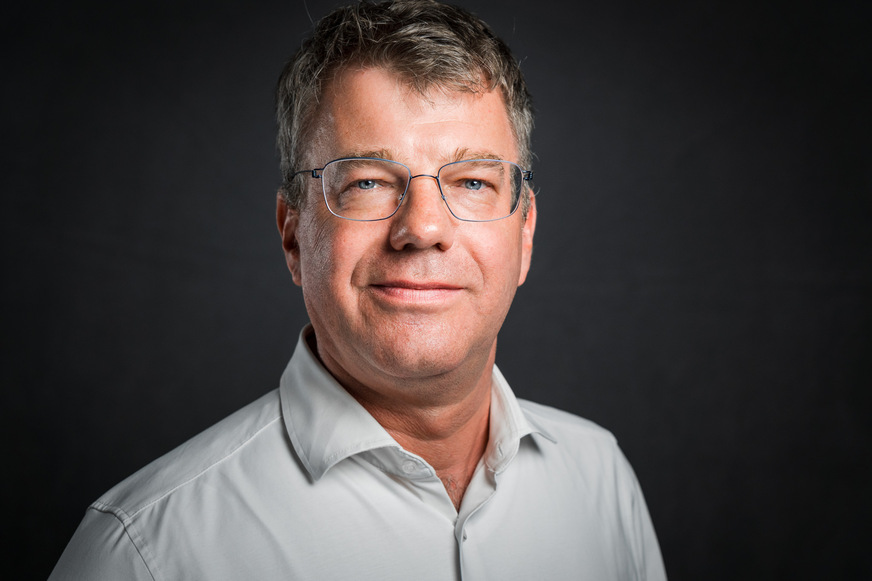Interview on jobs in the wind industry: "Apprenticeship rate lower than sick leave rate"

Mr. Messerschmidt, you've been working for IG Metall in the wind energy sector for years. How do you perceive the current mood among employees? Heiko Messerschmidt: I would say cautious and concerned. Cautious because everyone is waiting to see how the federal government will position itself. Everyone has read the coalition agreement and noted that there should be continuity regarding the expansion targets. Concerned because of statements by the Federal Minister for Economic Affairs, which raise some questions about the federal government's course. The concern is that we could end up in a situation like the one during the electricity price cap imposed by the then Minister for Economic Affairs, Peter Altmaier.
Read more about structural change and jobs
This had a significant impact on the industry at the time, albeit with a delay of about a year and a half. Thousands of jobs were lost back then. My colleagues witnessed the closure of companies like Senvion, mirroring the political decisions that followed. We are currently losing jobs again, particularly in the supplier sector, where production is being outsourced. Keeping the wind industry in Germany is by no means guaranteed.
At the same time, there is a significant shortage of skilled workers in the industry. How does this uncertainty affect the search for skilled workers? Heiko Messerschmidt: It impacts the general attitude and mood. Reports about the monitoring of the energy transition and job cuts in the supply chain are poison for the industry. They raise doubts about whether applying for jobs in this sector is the right step.
More information on the skilled worker shortage can be found here.
To preserve jobs, attract new skilled workers, and maintain Germany's industrial base, which will be electric in the future, we need political stability and an expansion of renewable energy. We must show people where the future opportunities lie and that renewable energies are crucial for this future. We have clear measures for the transition and want to see the creation of new, good jobs.
In which sectors is the shortage of skilled workers particularly acute? Heiko Messerschmidt: Electricians are in high demand, but this isn't limited to the renewable energy sector – there's strong competition from other industries. There's also a high demand in the service sector. We're also seeing growth in manufacturing, as at Siemens Gamesa in Cuxhaven. However, as I mentioned, there are also staff reductions and plant closures with relocations abroad.
What role does the willingness to provide training play? The wind energy sector isn't known for a high apprenticeship rate. Heiko Messerschmidt: The willingness to provide training is insufficient; the sector could do more in this area. The apprenticeship rate is at three percent, which is lower than the sick leave rate. However, we also see that many companies are committed, but not all apprenticeship positions can be filled. This is related to image and working conditions: Companies with collective bargaining agreements have a higher apprenticeship rate and are better able to fill apprenticeship positions. At the same time, in other sectors, such as the electrical industry, which compete for the same young people, permanent employment is standard practice. The wind energy sector could do more in this regard.
There are other sectors that are under considerable pressure. Couldn't skilled workers from the automotive or shipbuilding industries switch to the wind energy sector? What would need to be done to make that happen? Heiko Messerschmidt: That would be possible, but it's not easy to move people from one sector to another. You have to take a holistic approach and carefully examine the opportunities and challenges. It's about regional flexibility for people. It's about jobs for partners, schools for children, and affordable housing. But there are other approaches as well: Shipbuilding can play a crucial role in the construction of converter platforms for offshore wind energy. In Rostock and also at the Meyer Werft shipyard in Papenburg, we're on the right track. Hopefully, we'll have a concrete order by the beginning of next year at the latest. In this way, the energy transition contributes to maintaining industrial jobs in Germany and making the energy supply more resilient.

IG Metall Coast - Michael Seehase
You said that the skilled worker aspect needs to be considered holistically, including career changers and professional development. What role do communication and the industry's image play? Heiko Messerschmidt: Image is important, and renewable energies have a huge advantage here: they offer young people meaningful work with future prospects. The industry is already doing a lot in this regard. However, clean energy and good jobs must go hand in hand. Image alone isn't enough. It also depends on traditional issues like collective bargaining agreements, good training, and pathways for career changers. The wind industry is, after all, a career changer sector – there weren't even specific apprenticeships for a long time. This experience can be leveraged even more effectively. At the same time, the immigration of skilled workers plays a crucial role, especially in the internationally staffed teams of the offshore industry.
After 17 years on the coast, you are now moving to Berlin to the capital office of the IG Metall executive board. What message do you have for the wind industry? Heiko Messerschmidt: The crucial thing is to continue advocating for the sector and to join forces with other strong partners like the trade unions. The energy transition is not a given. But the positive aspect is: we are dependent on the political framework, and that is not a law of nature. It can be shaped. We must continue working to convince politicians and the public, and this is best achieved when we have something concrete to show: good jobs and a strong industrial base in Germany.
erneuerbareenergien





